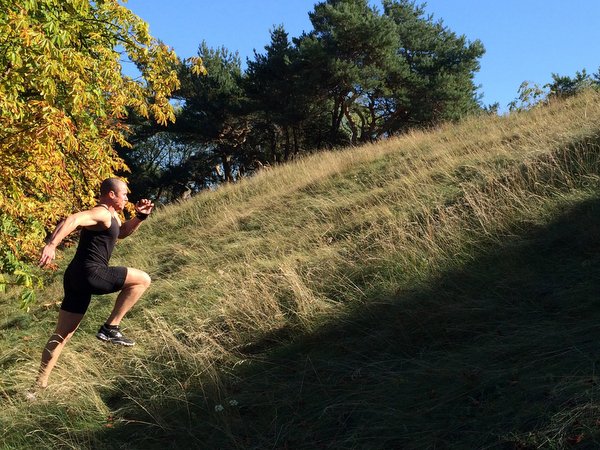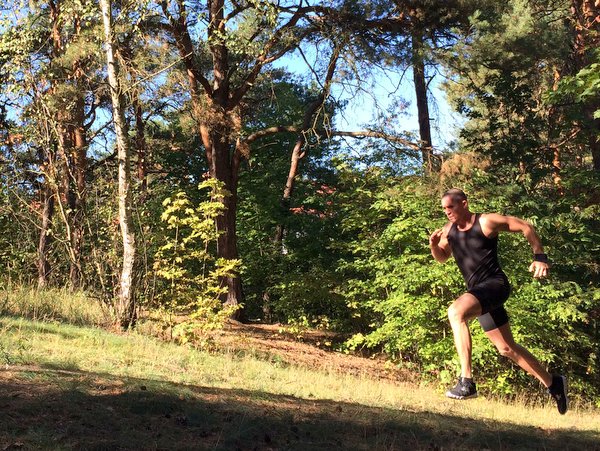Hill Sprints: An Important Component for Every All-Around Athlete’s Training Plan
by Filip Dryla, RKC-II

Hill sprints strengthen our musculoskeletal system. They teach us how to engage new groups of venous smooth-muscle cells1 (with the same neuron), which are rarely engaged in normal training. Hill sprints are a great way to simultaneously enhance training for maximum power, muscle building—sprints recruit a larger number of muscle fibers than weighted squats—and fat burning since they are a high intensity exercise performed in a relatively short period of time. In an optimally-designed training plan, sprints can be used to increase endurance and physical conditioning. In Kenya and Ethiopia, hill sprints have always been broadly used in their running schools. Training with hill sprints also has many positive psychological benefits. Since up-hills are very mentally demanding, they also temper the spirit so we become tougher and more confident on the "hills" of life.
It is good to weave hill sprints into your sessions, especially when you don’t have time to complete a training plan—but don’t want to exclude intensity from your training. By including hill sprints, we can get a variety of significant benefits from just a little running—a training session might be only 20 minutes. Short sprints can be used as intervals or even in place of squats when the goal of the session is to engage the upper body. Hill sprints are a great training component, provided that we know how to properly use them.
Before you start running uphill…
Make sure that the uphill grade is appropriate for your current abilities. Total beginners should not try to run up demanding slopes. It is also crucial to take the time to adapt to long slow distance running (usually 2-3 weeks of running every second day is enough while gradually increasing the mileage/pace). Do not skip your warm-up or muscle activation exercises before sprinting—a short jog, squats, vertical jumps, lunges, arm swings should be included. It’s also important to make sure that the location for your hill sprints is safe and stable.

Sprints are very demanding—they require a maximum effort at maximum intensity with 100% power. For this reason, beginners should always respect their current fitness level and start with a moderate uphill grade to help their legs adapt without risking injury.
- When you begin your adventure with sprints and running, taking time to adapt is crucial. Avoid all-out efforts at first.
- Up-hill sprints are performed at 100% intensity at full speed, however, you should gradually accelerate into your first hill sprint and reach about 90-95% max speed on that first sprint rep to reduce your risk of injury.
- You must rest completely after each repetition, otherwise it can affect your workout performance for a few days afterwards. Slowly walking back down the hill is usually enough to ensure full recovery, but you should always listen to your body. Every repetition should be equally good.
- Finish the training session with a slow run and stretching.
Example training session for power and speed:
- 8-12 10% Grade (or greater) Up-hills at 30-40 meters each
- Recover by walking back down the hill: 60-120 seconds
An example endurance session:
- 6-8x 200 meters sprints up (lower grade)
- 600-800 meters slow run, march
Variables: if you learn at some point that sprints are not enough for you, you can always weave in some extra exercises between the sprints.
I perform up-hill sprints in my training on a regular basis. While preparing for mid-distance races, I drill the endurance example above for 7x(800m+200m). Short, quick sprints helped me sustain my power and mobility after a knee injury which unfortunately made me exclude ATG (a$$ to the ground) squats from my training. Besides, all my clients—women and men—who are preparing for trail running or just want to improve the quality of their running technique, were satisfied with the effect of up-hill sprints on their performance.
Try up-hill sprints and let us know how it goes!
(1) http://www.ncbi.nlm.nih.gov/pubmed/15454885
Back